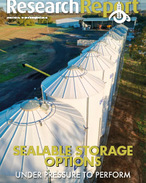This article is 9 years old. Images might not display.
NSW DPI Senior Principal Research Scientist Paul Greenwood said the research used sensors and wireless networks to measure individual feed intake and efficiency of livestock in a commercial grazing environment.
“Feed can be a major cost of production for a cattle enterprise, and most of Australia’s beef production is raised on pasture, so small improvements in pasture efficiency can have large impacts on the bottom line,” Greenwood said.
“Our aim is to develop sensor devices that can be practically and economically deployed on livestock in their commercial grazing environment, to inform and enhance productivity and efficiency improvements.
“These devices will enable the development of new and more commercially relevant traits for genetic or genomic selection of grazing livestock, and allow for greater precision in livestock production and pasture management using real time data.”
Greenwood said various economic analyses showed the research could deliver substantial value to industry, with benefit cost ratios for genetic improvement ranging from $5.50 to $7.70 per dollar invested within a southern Australian beef enterprise.
“These analyses take no account of the additional benefits likely to accrue from improved health, reproduction and welfare status of cattle or the labour savings that will flow from the research,” Greenwood said.
While tested on cattle, the research showed it could also be used in the sheep sector.
The sensor devices are able to reliably identify and measure a range of behaviours that relate to pasture intake, such as grazing, ruminating, drinking, walking and resting.
CSIRO Research Scientist and Group Leader Aaron Ingham said various ways of obtaining benchmark data on pasture intake are used to validate the sensor methods in the Pasture Intake Facility.
“These include highly accurate measurement of pasture disappearance due to grazing, and controlled release devices in the rumen with markers for pasture intake developed here at CSIRO Chiswick in Armidale,” Ingham said.
“The sensors may be used as ear tags, collars, a harness or direct attachment devices to measure proximity, location, behaviour, health and welfare.
“These devices are crucial in understanding the nature of the pasture being grazed, which directly impacts on the amount and type of pasture eaten by each animal, along with the optimisation of pasture management systems.”























